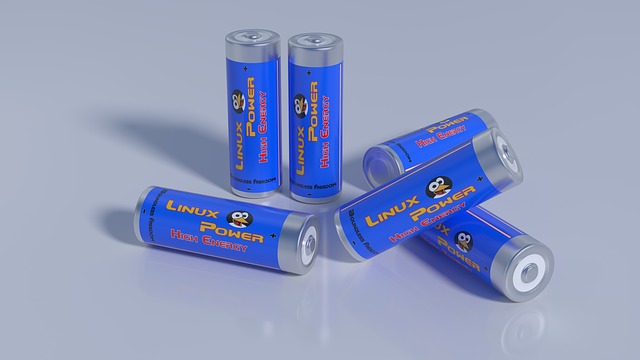What is lithium-ion battery?
Aug 08, 2019 Pageview:1819
Batteries are among the best technologies the world has ever witnessed. They came at the right time when the world needed to shift from fossil fuels to renewable energy. With global warming and other similar treats facing the natural environment, we cannot deny the role of batteries in restoring the order.
And to make things even better, the technology has kept improving over the years. We have had a different kind of batteries, and the best of them all is lithium-based.
Lithium-Ion batteries (LIB) are some of the most powerful batteries today. They are strong, durable, and produce more power. In this guide, we are going to cover what LIB is.
Definition of lithium-ion formula
Lithium-ion batteries appear in a family of rechargeable batteries. They have high energy density and commonly use polymer electronics.
Many people confuse lithium batteries with LIB. The former is an umbrella under which the latter falls. Some lithium batteries are disposable, meaning they cannot be recharged. LIB, on the other, applies the use of intercalated lithium. This differentiates them from the metallic lithium electrode of other batteries in the same family.
LIB contains negative and positive electrodes surrounded by an electrolyte. This combination creates a perfect medium for lithium ions to move freely from one electrode to another and back.
During discharge, electrons flow through an external circuit causing electrical energy to flow. The energy produced is powerful enough to get most electronic devices working.
A process called insertion (intercalation) or extraction (deintercalation) takes place repeatedly. It is by this that the lithium-ion moves freely in and out of the electrodes’ structures.
LIBs are also referred to as the ‘rocking chare batteries’ or ‘swing batteries,’ and you can imagine why. The terminology comes from the movement of lithium ions, as described above.
A discharge causes the lithium ions to move from the anode (usually with graphite =C6) to the cathode. At the same time, the electrons will be moving in the same direction through an external circuit. The reverse takes place during a recharge where the lithium ions and electrodes move back to the anode, now highly energized.
Here is simple chemistry of the above. During half-reaction of the cathode in the lithium-doped cobalt oxide substrate, we get:
CoO2 + Li++e- LiCoO2
The half-reaction in the anode for the graphite:
LiC6 C6 + Li+ +e-
During a full reaction, discharging and charging, the reaction is:
LiC6 + CoO2 C6=LiCoO2.
There are limits to the overall reaction. For instance, if the battery is over-discharged, the lithium cobalt anode supersaturates. In this case, a lithium oxide will be produced, leading to a reaction that cannot be reversed. On the other hand, overcharging the batteries also has effects as it leads to the synthesis of the cobalt IV oxide. It is something similar to x-ray diffraction.
The transportation of lithium ions from the negative to the positive electrodes takes place by oxidizing the metal transition. This means, Cobalt(Co), in Li (1-x)CoO2 is reduced increased from CO3+ to CO4+ during a charge. The opposite happens during a discharge. You can only reverse a cobalt electrode reaction for x<0.5. This is why there is a depth allowed for discharge.
The energy of a cell is found by calculating the voltage times the charge. Lithium batteries contain more power than other batteries because of:
· Use of liquid electrolytes which contain salts in an organic solvent.
· Solid electrolytes. Recent developments have encouraged the used of solid electrolytes making the batteries better in performance.
History of battery technology
Here is a chronological history of the battery technology.
· 1799. An Italian physicist Alessandro Volta invents the voltaic pile. He developed the first electrical battery that provided continuous electrical current to a circuit. In this voltaic pile, Zinc and copper were used for electrode, and brine-soaked paper became the electrolyte.
· 1836. Forty years later, a British chemist John Frederic Daniell created a new cell, the Daniell Cell. The new cell was aimed at solving the hydrogen bubble problem. In the previous invention, hydrogen bubbles piled at the bottom of the zinc electrodes limiting its lifespan and use. Daniell introduced the use of a copper pot filled with a copper sulfate solution. It was further immersed in sulfuric acid and a zinc electrolyte inside a container.
· 1859. A French Physicist Gaston Plante invents the first rechargeable battery. This was the first Lead-Acid batteries that came with low cost and high surge currents. They are still used in automobile starter motors even today.
· 1899. Waldemar Jungmar invents the Nickel Cadmium NiCad batteries in Sweden. They were first to wet like the lead-acid batteries using a liquid electrolyte. These batteries came as the stepping stone for modern battery technology.
· The 1950s. Brands like Duracell and Energizer became popular in developing the alkaline batteries. They are inexpensive and typically non-rechargeable. But a specific electrolyte, potassium hydroxide can make them rechargeable. The alkaline batteries in use today are an invention of a Canadian engineer, Lewis Urry. He used zinc and manganese oxide in the electrodes. Potassium hydroxide serves as the alkaline electrolyte.
· 1989. The Nickel-Metal Hydride NiMH batteries are invented with a hydrogen-absorbing alloy in place of toxic cadmium. They are more eco-friendly and used to power tools, digital cameras, and other electronic devices.
· 1991. The Lithium-Ion battery comes into play with Sony releasing the first commercial LIB batteries. These are high energy batteries with high energy density, as discussed above.
Specification of lithium-ion battery
LIB batteries vary in specifications depending on the specific type. Consider 12v – 100Ah LIB batteries and 24V – 100Ah Lim as below.
LIB type 12V – 100Ah 24V – 100Ah
Model no. 012-00002GF 012-00004GF
Nominal Capacity 100Ah 100Ah
Nominal battery voltage 12VDC 24VDC
Operation V Discharge 9.2VDC 18.4VDC
Operation V charge 15 VDC 30VDC
Cell V min cut-off 2.3 VDC 2.3 VDC
Cell voltage max cut-off 4.2 VDC 4.2 VDC
Continuous charge/discharge current 100A 100A
Life cycle 80%/70% DOD >2000/>5000 >2000/>5000
Operation temperature -40 degrees C= 50 degrees C -40 degrees C + 50 degree C
Operation mode consumption 350mA 180mA
Watt hours 1320Wh 2650Wh
- Prev Article: Discussion on Lithium Ion Battery Temperature Sensitivity
- Next Article: What is 18650 battery voltage tester?
Leave Message
Hottest Categories
-
Hottest Industry News
-
Latest Industry News











